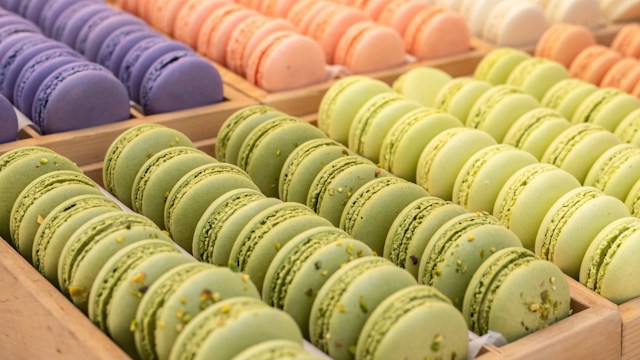Ah, the glorious French Macaron! It’s a treat that’s as delicate and intricate as it is delightful. The perfect combination of a crisp shell, chewy interior, and luscious filling make this meringue-based cookie a beloved dessert around the world. Yet, despite its beguilingly simple ingredients—almond flour, egg whites, sugar, and a dash of magic—making French Macarons can be notoriously difficult, especially for beginners. But don’t despair. With patience, practice, and the right guidance, you too can master the art of French Macarons with consistent results. Let’s embark on a gastronomic adventure to discover how.
Understanding the Basics of French Macarons
Before we dive into the methods and steps to make flawless Macarons, it is essential to understand what truly defines this French delicacy.
French Macarons stand apart from ordinary cookies with their distinguishing features—a glossy, lightly domed shell with a characteristic frilly foot (or “pied”) at the bottom, a tender, slightly chewy inner layer, and a mouthwatering layer of ganache, buttercream, or jam sandwiched between two shells.
Lire également : How can you achieve the perfect crust on a neapolitan pizza?
The art of mastering French Macarons lies in achieving the right balance between these elements and maintaining consistency in every batch. Consistency is made possible by understanding the science behind each step and meticulously controlling the variables involved.
The Importance of Quality Ingredients
In a recipe as minimalistic as French Macarons, every ingredient counts. There are no mix-ins, no flashy toppings to hide behind—just the raw, unadorned taste of almond, sugar, and egg whites, accented by the flavour of your filling.
A lire également : How can you infuse gourmet flavors into classic mac and cheese?
To ensure a superior taste and texture, always use the finest quality ingredients. When sourcing almond flour, look for finely ground, blanched almond flour. Lower quality almond flours may contain larger chunks, which can disrupt the smoothness of your macaron shell.
Egg whites play a critical role in creating the structure of a macaron. Fresh eggs are generally preferred, though some bakers swear by "aged" egg whites—those that have been separated and left to sit in the refrigerator for a day or two.
Perfecting the Meringue
A well-whisked meringue is the bedrock of a good macaron. It is what gives the macaron its light, airy texture and its characteristic glossy shell.
The meringue for macarons should be whisked to stiff peaks – that is when you lift your whisk, the peaks should hold and not droop down. It is essential to incorporate the sugar gradually into the egg whites while whisking to ensure even distribution and prevent the meringue from deflating.
Controlling the temperature and humidity in your kitchen is another crucial aspect to consider. If it’s too humid, the meringue can become too liquidy and won’t hold its shape. If it’s too dry, the meringue can become crumbly and difficult to mix.
The Technique of Macaronage
The term "macaronage" refers to the process of folding the almond flour and icing sugar mixture into the meringue. This step is crucial as it affects the texture and appearance of the macaron shells.
The aim of macaronage is to achieve a magma-like consistency: the batter should be smooth and shiny, and it should slowly flow off your spatula in a thick ribbon when lifted. Over-mix, and your macarons will be flat and have no feet. Under-mix, and your macarons will be lumpy and cracked.
Baking and Assembling the Macarons
Once your macaron batter is piped onto a baking sheet, let them sit at room temperature until a skin forms on the surface. This step, known as resting, can take anywhere from 15 minutes to an hour, depending on the humidity. You’ll know they’re ready when you can touch the surface of the shells lightly and it doesn’t stick to your finger.
Bake the macarons in a preheated oven at a lower temperature for a longer time. This helps the macarons rise evenly and develop their characteristic feet without browning or cracking.
Once the macarons are baked and cooled, pair them up by size and fill with your preferred filling. The macarons should then be matured in the fridge for at least 24 hours to allow the flavours to meld together, resulting in a more flavorful macaron.
Mastering the art of French Macarons is a journey filled with trials, errors, and delicious successes. The process may seem daunting initially, but with practice, precision, and a keen eye for detail, you’ll be baking perfect macarons batch after batch. So, roll up your sleeves, put on your apron, and get ready to conquer the world of French Macarons.
Troubleshooting Common Macaron Issues
If you’ve tried your hand at making French macarons, you’ve probably experienced a few hiccups along the way. Don’t fret! Baking is a science and even the most experienced bakers encounter issues occasionally. Let’s review some common macaron problems and their solutions.
Hollow shells: Hollow shells are usually a result of under-whipped meringue or overmixed batter. Make sure the meringue is stiff and shiny before incorporating the dry ingredients and mix until the batter forms a thick, lava-like consistency.
Cracked tops: Cracked tops can be caused by a variety of factors: the batter could be over-mixed, the oven temperature too high, or the shells didn’t rest long enough before baking. Take care to follow each step diligently and ensure your oven is at the right temperature.
No feet: The characteristic frilly foot is a hallmark of French Macarons. If your macarons lack feet, the likely culprits are under-mixed batter, or the shells didn’t rest long enough to form a skin before baking.
Uneven or lopsided macarons: These are often due to uneven heat distribution in the oven or the baking tray being tilted. Always use an oven thermometer to check the temperature and ensure your baking tray is level.
Learning to troubleshoot and rectify these common issues is an essential part of mastering the art of French Macarons.
Conclusion: The Reward in Perseverance
Mastering the art of French Macarons is not just about creating a delightful treat—it’s a journey of patience, precision, and persistence. It’s about understanding that even a seemingly simple recipe can offer a complex array of challenges and rewards.
Yes, making French Macarons can be tough. You’ll face failed batches, cracked shells, and deflated meringues. But don’t let these deter you. Each stumbling block is a learning opportunity, a chance to refine your technique and deepen your understanding of the craft.
When you finally hold in your hand a perfectly crafted macaron—with its smooth, glossy shell, delightful pied, chewy interior, and indulgent filling—you’ll know that all the effort was worth it. Not just for the end product, but for the journey itself.
So, here’s to your future of macaron making. May it be filled with persistence, learning, delicious errors, and even more delicious successes. Remember, every great baker started somewhere, and as Julia Child famously said, "No one is born a great cook, one learns by doing." Enjoy the process, and before you know it, you’ll be dishing up batch after batch of sublime French Macarons. Bon Appétit!











